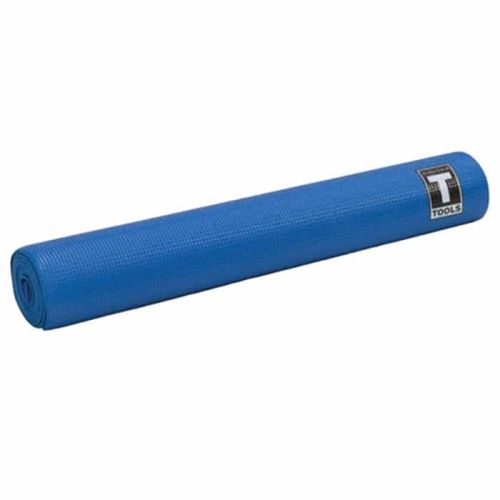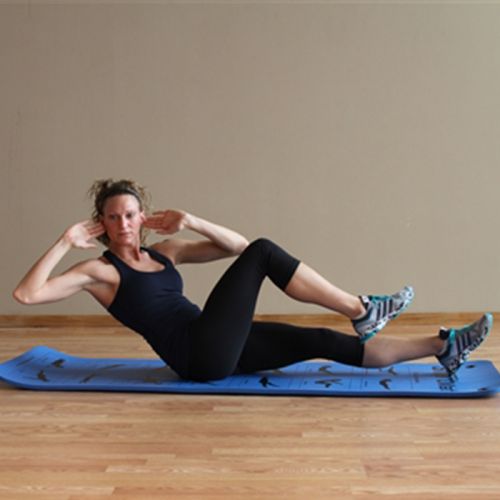
Selecting the appropriate mat can significantly enhance your workout experience when engaging in fitness activities. This comprehensive guide will delve into the distinctions between yoga mats and exercise mats. When it comes to yoga mat vs. exercise mat, there are several factors to consider. While both mats provide a comfortable and supportive surface for workouts, they are designed with different activities in mind. Understanding each mat type’s unique features and benefits will enable you to make an informed decision based on your fitness goals and preferences. As we embark on this journey, we will also introduce Motion Fitness, a trusted interactive fitness equipment and accessories provider.
Understanding Yoga Mats
Yoga mat for exercise are specifically designed to meet the unique demands of yoga practice. They possess distinct features and characteristics contributing to a comfortable and supportive yoga experience. Let’s delve deeper into the attributes of yoga mats and explore their benefits for yoga practitioners.
Features and Characteristics
Yoga mats are crafted carefully considering various factors, including material, thickness, and texture. These features play a pivotal role in ensuring optimal performance during yoga sessions.
- Material: Yoga mats are commonly made from materials like PVC, TPE, rubber, or natural fibers such as cotton or jute. Each material offers different qualities in durability, grip, and eco-friendliness. The choice of material affects the overall feel and performance of the mat.
- Thickness: Yoga mats come in different thickness levels, typically 1/16 to 1/4 inch. Thinner mats provide a more stable connection to the ground, allowing for better balance and grounding. Thicker mats offer additional cushioning, making them suitable for individuals seeking extra support for their joints.
- Texture: The texture of a yoga mat influences its grip and traction. Mats can have smooth or textured surfaces, depending on personal preferences and the style of yoga practiced. Textured mats provide better grip, preventing slips and ensuring stability during poses and transitions.
Benefits of Yoga Practice
Using a yoga mat offers several benefits that enhance the yoga practice:
- Grip: Yoga mats are designed to provide a reliable hold, allowing practitioners to maintain poses confidently. The mat’s textured surface or specialized patterns enhance traction, preventing hands and feet from slipping, especially in poses that require balance and stability.
- Cushioning: The cushioning provided by yoga mats offers comfort and support, particularly for seated and kneeling poses. The extra padding absorbs pressure and reduces joint strain, making the practice more accessible and enjoyable.
- Stability: Yoga mats create a stable surface that aids in maintaining proper alignment during poses. They provide a designated area for practice, helping practitioners visualize their boundaries and alignment cues. This stability promotes body awareness and precision in movements.
Suitable for Low-Impact Exercises
Apart from yoga, yoga mats are versatile and suitable for various low-impact exercises and activities:
- Pilates: Yoga mats provide the necessary cushioning and support for Pilates exercises, focusing on core strength, flexibility, and body control. The stability and comfort of yoga mats contribute to a safe and effective Pilates practice.
- Meditation: Yoga mats create a comfortable and designated space for meditation practice. The cushioning and softness of the mat help reduce discomfort during extended periods of seated meditation, allowing practitioners to remain focused and grounded.
- Stretching: Yoga mats are ideal for stretching routines, offering a supportive surface for trying various muscle groups. The cushioning and grip of the mat assist in maintaining proper alignment and prevent slippage during stretching movements.
Exploring Exercise Mats
Features and Characteristics
Exercise mats, on the other hand, are designed to cater to a wide range of workouts. We will examine their unique properties, including durability, thickness, and shock absorption capabilities. These features ensure longevity and comfort during rigorous exercise sessions.
Versatility for Various Workouts
Exercise mats offer versatility, making them suitable for different types of workouts. We will highlight their adaptability to high-impact activities, body weight, and floor exercises. The cushioning and shock absorption of the best exercise mats provides support and protection for these dynamic workout routines.
Considerations for Safety and Comfort
Safety and comfort are paramount during workouts, and exercise mats provide both. We will discuss how exercise mats protect joints by absorbing impact and providing cushioning. These factors contribute to minimizing the risk of injuries and maximizing comfort during intense exercise sessions.
Yoga Mat vs. Exercise Mat
Understanding the differences between yoga and exercise mats is crucial for selecting the right mat that suits your fitness activities. Let’s explore exercise mat vs. yoga mat.
Purpose and Design
The primary intended use and design of yoga mats and exercise mats differ:
- Yoga Mats: Yoga mats are specifically designed for yoga-specific movements. They provide the necessary support, cushioning, and grip for practicing various yoga poses and transitions. Yoga mats enhance stability, balance, and alignment during yoga sessions.
- Exercise Mats: Exercise mats are designed to cater to a broader range of workouts beyond yoga. They are versatile and adaptable to different exercises, including high-impact activities, bodyweight exercises, and floor exercises. These work out mats prioritize providing a stable and comfortable surface for various exercises and movements.
Understanding the purpose and design of each mat type will help you choose the one that aligns with the specific demands of your fitness activities.
Thickness and Cushioning
Another key difference between yoga mats and exercise mats lies in their thickness and cushioning levels:
- Yoga Mats: Yoga mat for home workout tend to be thinner than exercise mats. The slimmer profile of yoga mats allows for a more stable connection to the ground, promoting better balance and grounding during yoga poses. While they provide some cushioning, it is typically minimal to maintain a closer connection to the floor, enabling practitioners to feel grounded.
- Exercise Mats: Exercise mats are generally thicker than yoga mats. The added thickness of exercise mats provides excellent impact absorption and support, making them suitable for high-impact exercises involving jumping, running, or other intense movements. The extra cushioning of exercise mats helps protect joints and reduce the strain caused by vigorous workouts.
Considering your specific needs for impact absorption and support will guide you in choosing the appropriate mat thickness and cushioning.
Grip and Traction
Grip and traction are essential factors to consider when selecting a mat:
- Yoga Mats: Yoga mats provide excellent grip and traction. The textured surfaces or specialized patterns on yoga mats enhance the grip, allowing practitioners to maintain poses without slipping. The focus on grip and traction in yoga mats is essential for maintaining stability and balance during yoga practice.
- Exercise Mats: While exercise mats also offer grip, they primarily emphasize providing stability during various exercises. The focus on hold may vary depending on the specific exercise mat design. Still, exercise mats provide a stable surface for different movements and workouts.
Consider the types of exercises you engage in and the importance of grip and traction for those activities to choose a mat that suits your needs.
By understanding these critical differences between yoga mats and exercise mats, you can make an informed decision and select the mat that best supports your fitness routine and requirements. When comparing yoga mat vs. exercise mat, it’s important to consider factors such as thickness, cushioning, grip, and durability. Each type of mat is designed with specific activities in mind, and choosing the right one can enhance your overall workout experience and provide adequate support for your body.
Choosing the Right Mat for Your Needs
Considering Your Fitness Activities
Assessing the types of exercises and activities you participate in is crucial for selecting the best workout mat. A yoga mat would be the ideal choice if you primarily practice yoga. However, an exercise mat would better suit your needs if you engage in diverse workout routines involving high-impact exercises or floor exercises.
Personal Preferences and Comfort
Personal preferences and comfort should also be taken into account. Factors such as texture, material, and thickness significantly determine comfort levels during workouts. Exploring different options and finding a mat that aligns with your preferences will enhance your overall workout experience.
Conclusion
In conclusion, understanding the distinctions between yoga and exercise mats is essential for choosing the right mat for your fitness activities. Yoga mats provide specific features and benefits for yoga practice and low-impact exercises, while exercise mats offer versatility and support for various workouts. By considering the purpose, thickness, cushioning, grip, and traction, you can make an informed decision that enhances safety, comfort, and overall workout experience.
Embrace the diversity of mats available at Motion Fitness, a leading exercise equipment and accessories provider. They offer a wide selection of high-quality mats that cater to different fitness needs and preferences. Elevate your fitness journey with the right mat, and unlock the full potential of your workouts.






